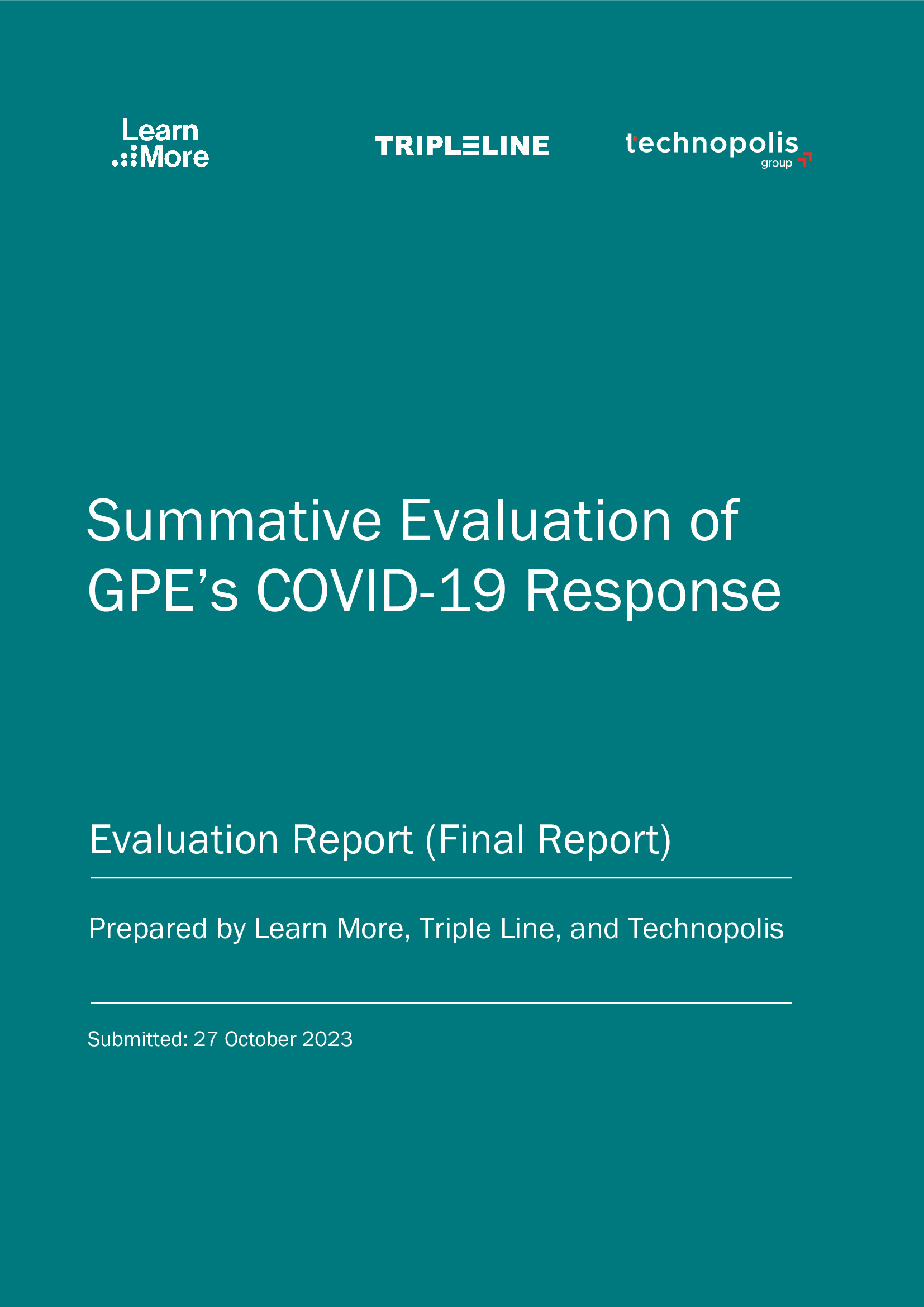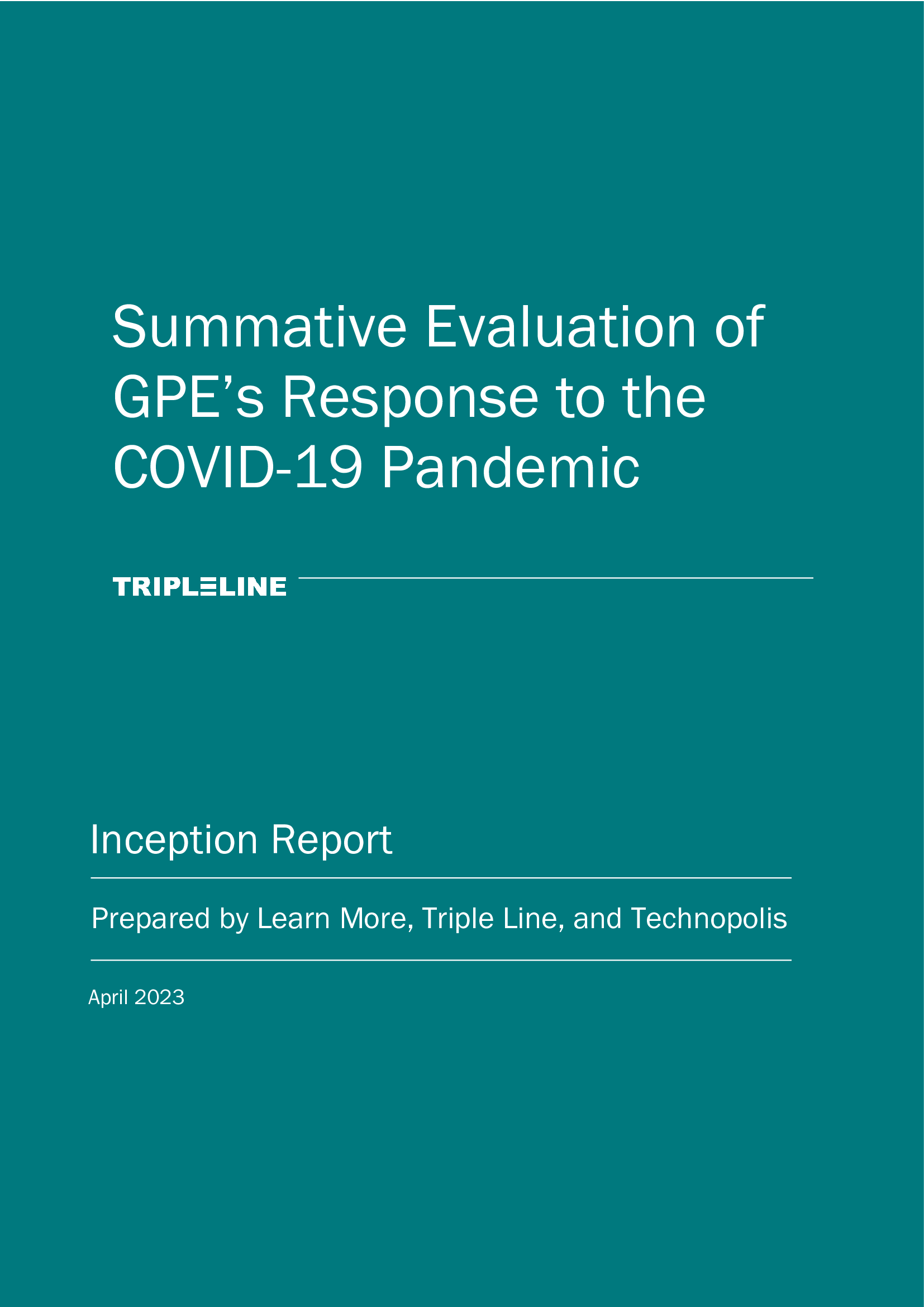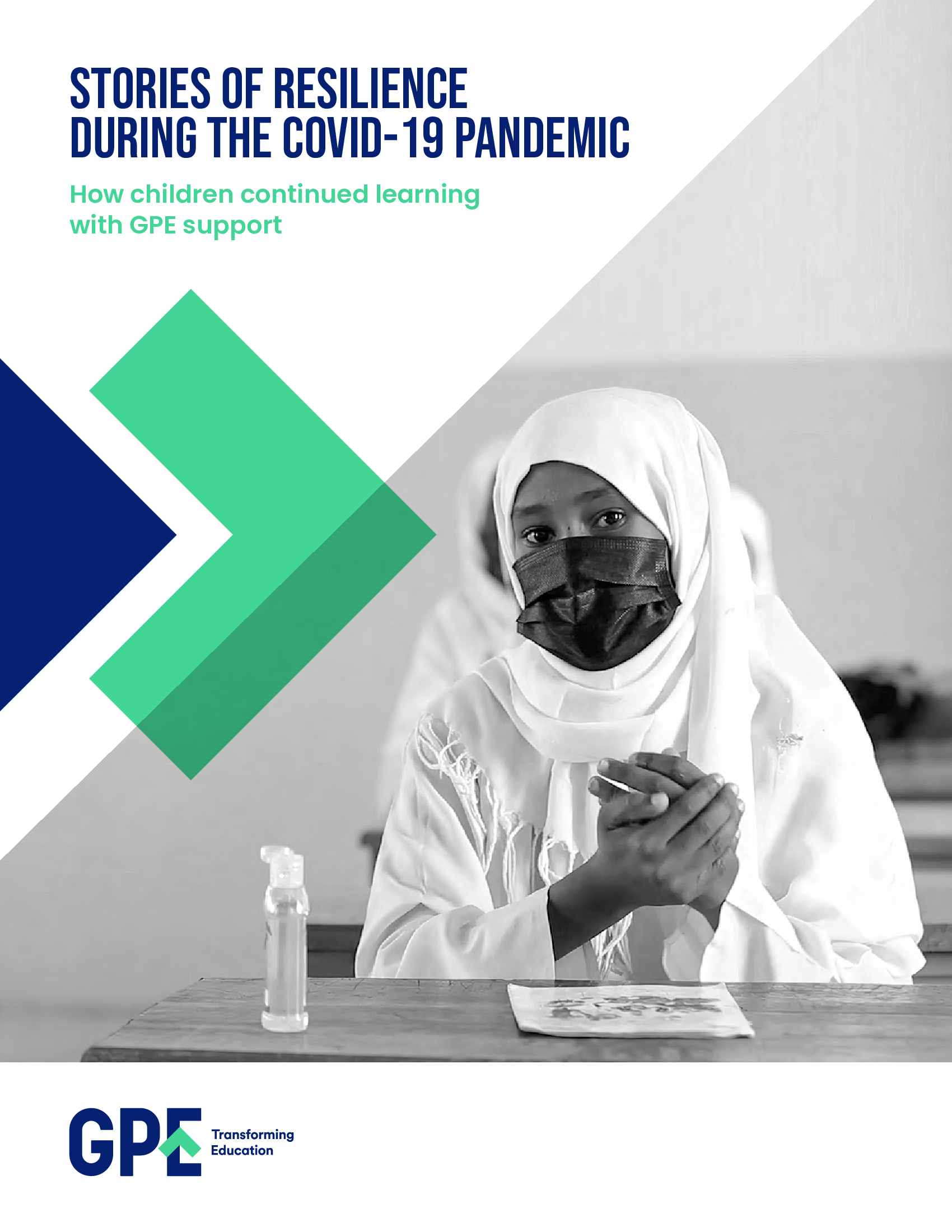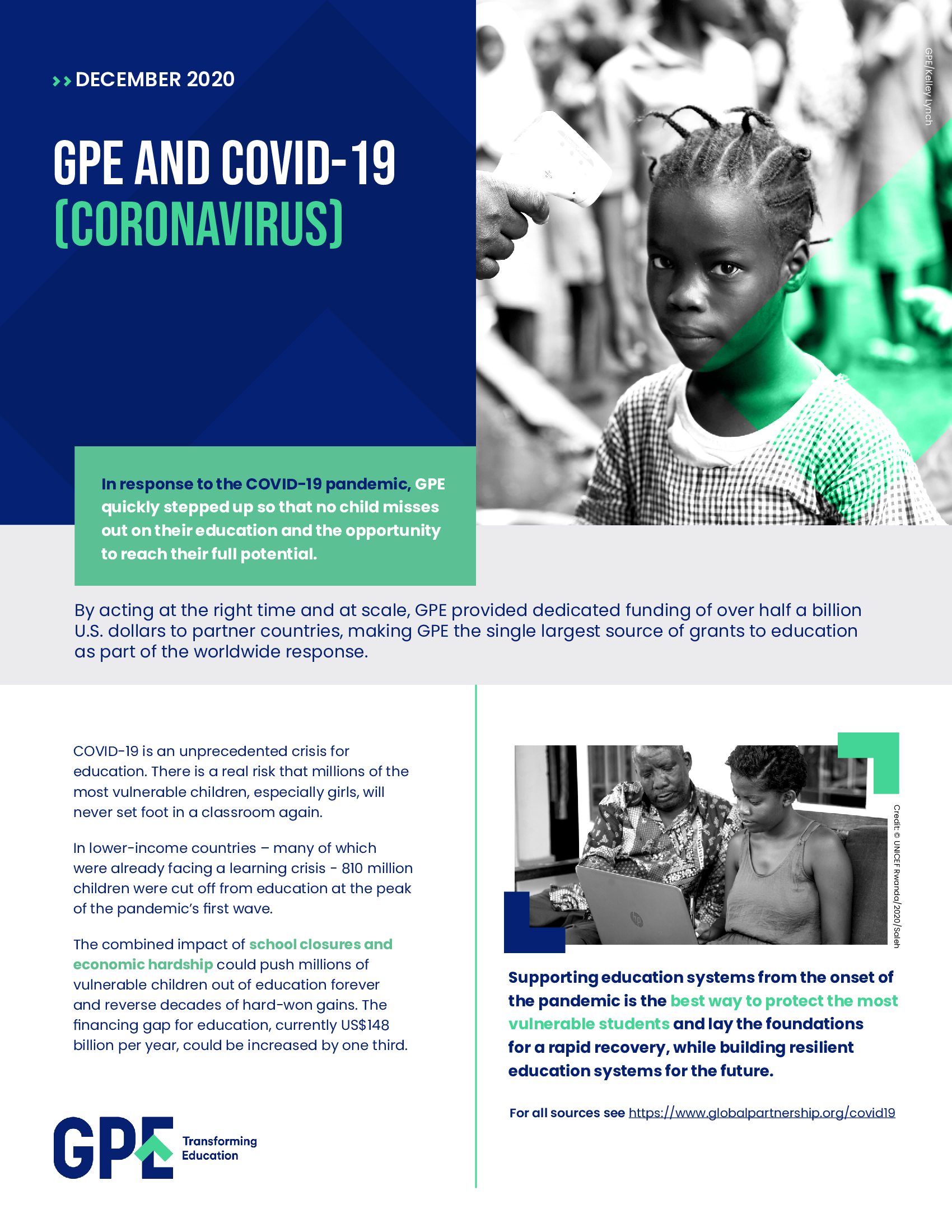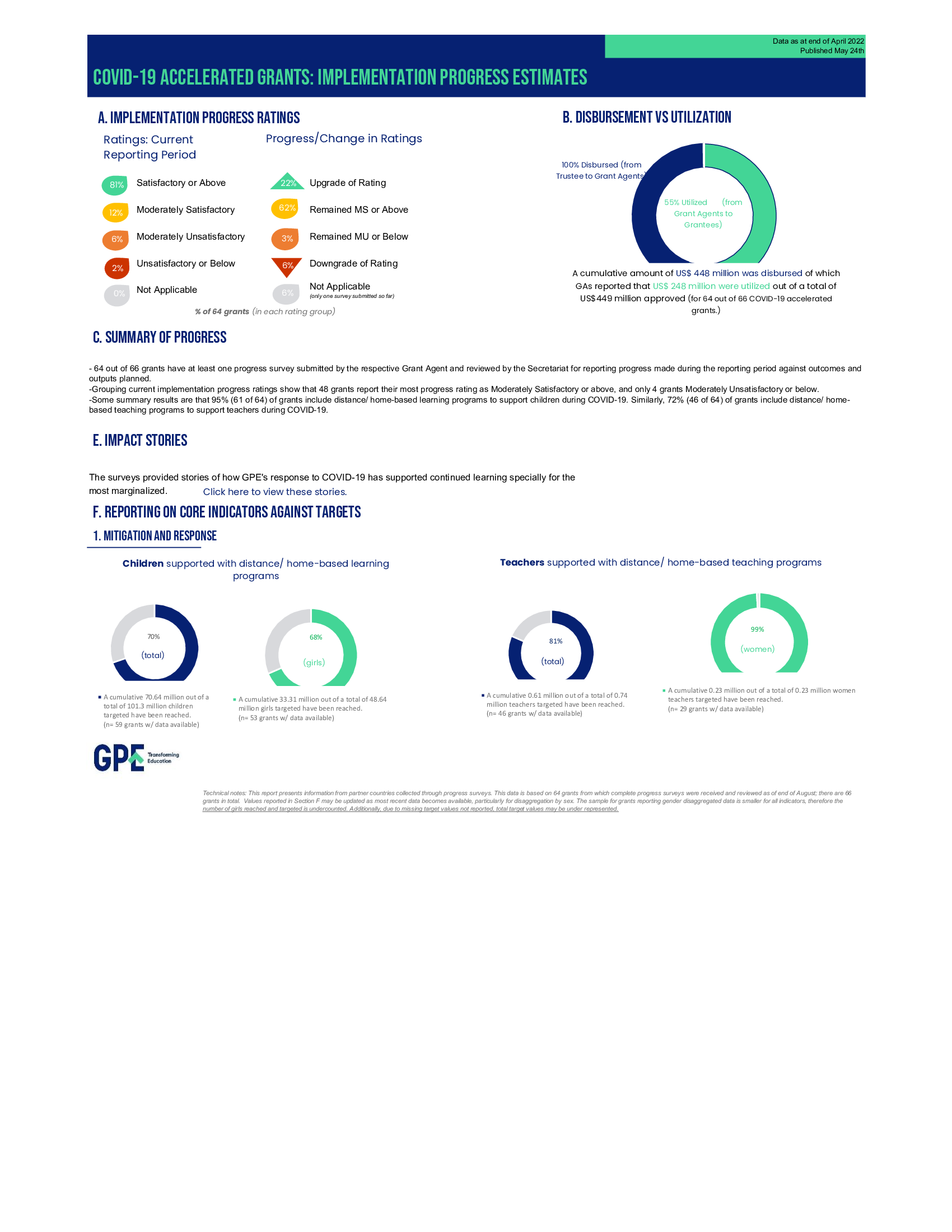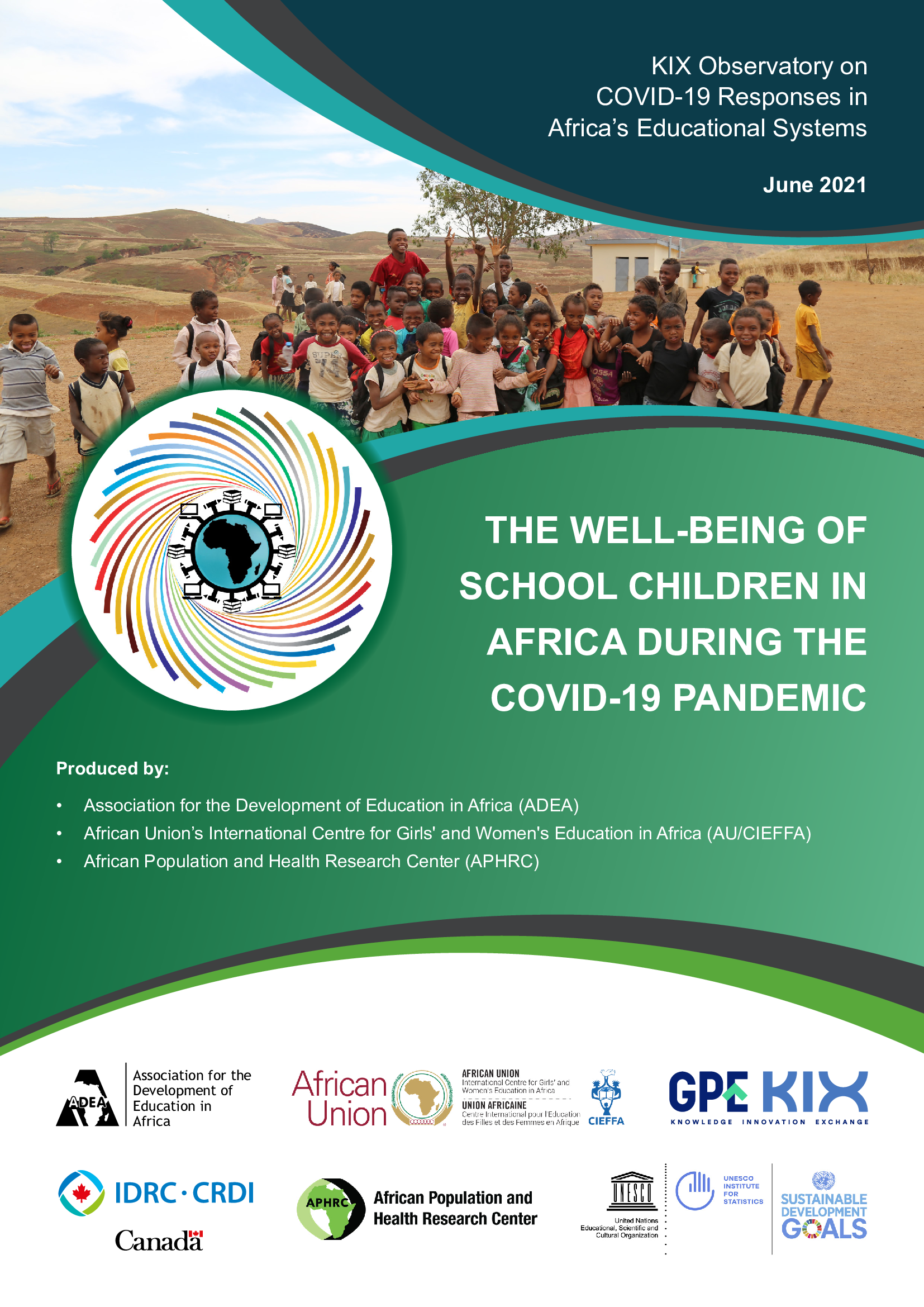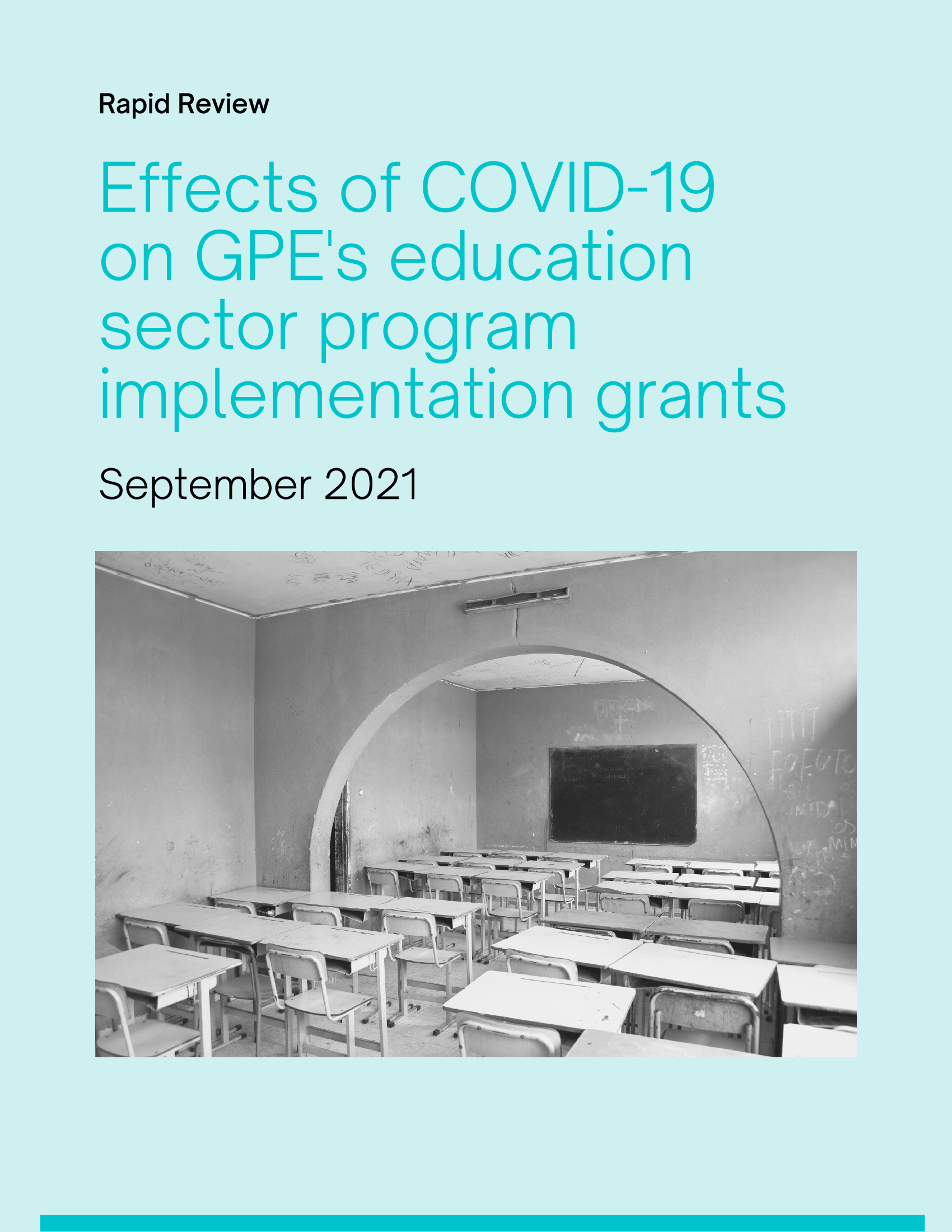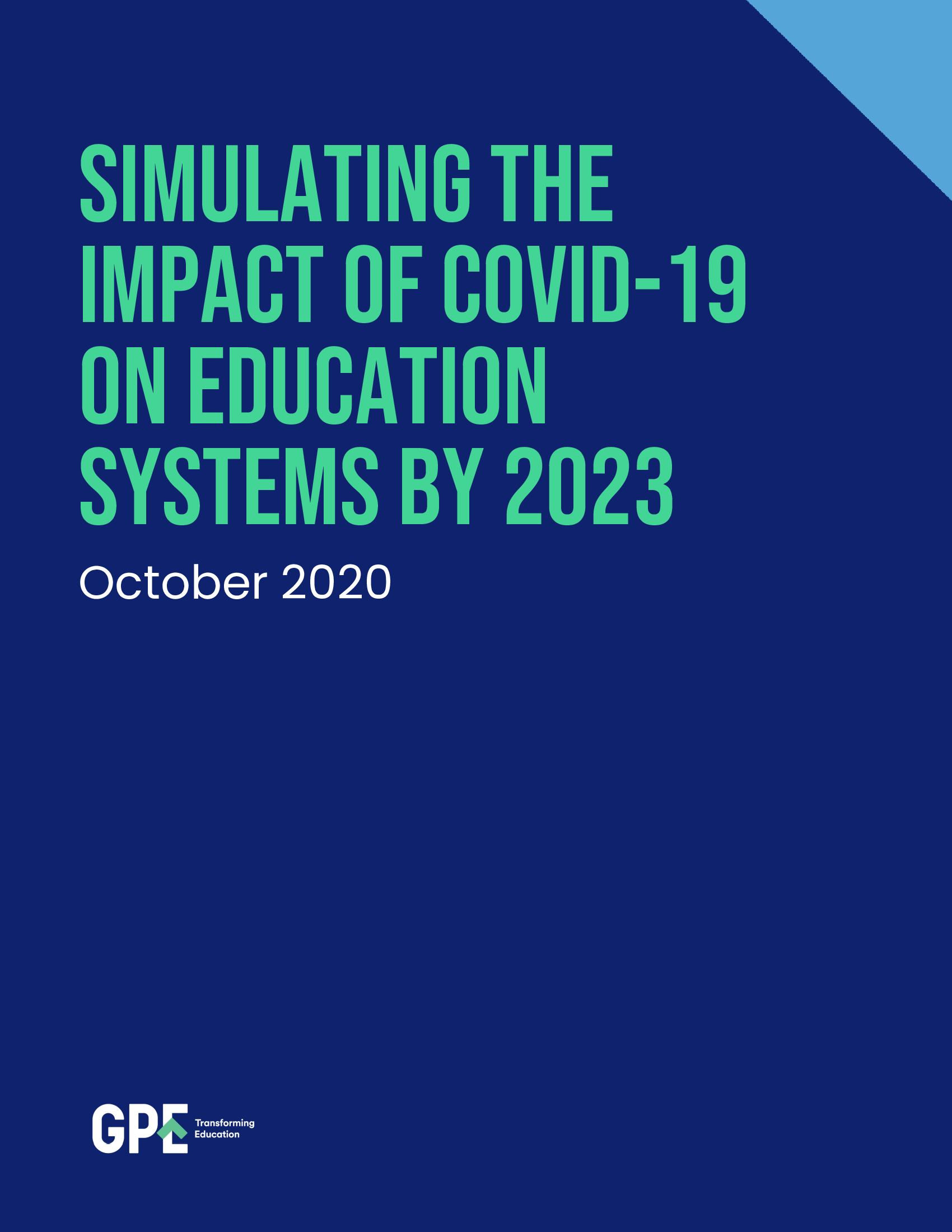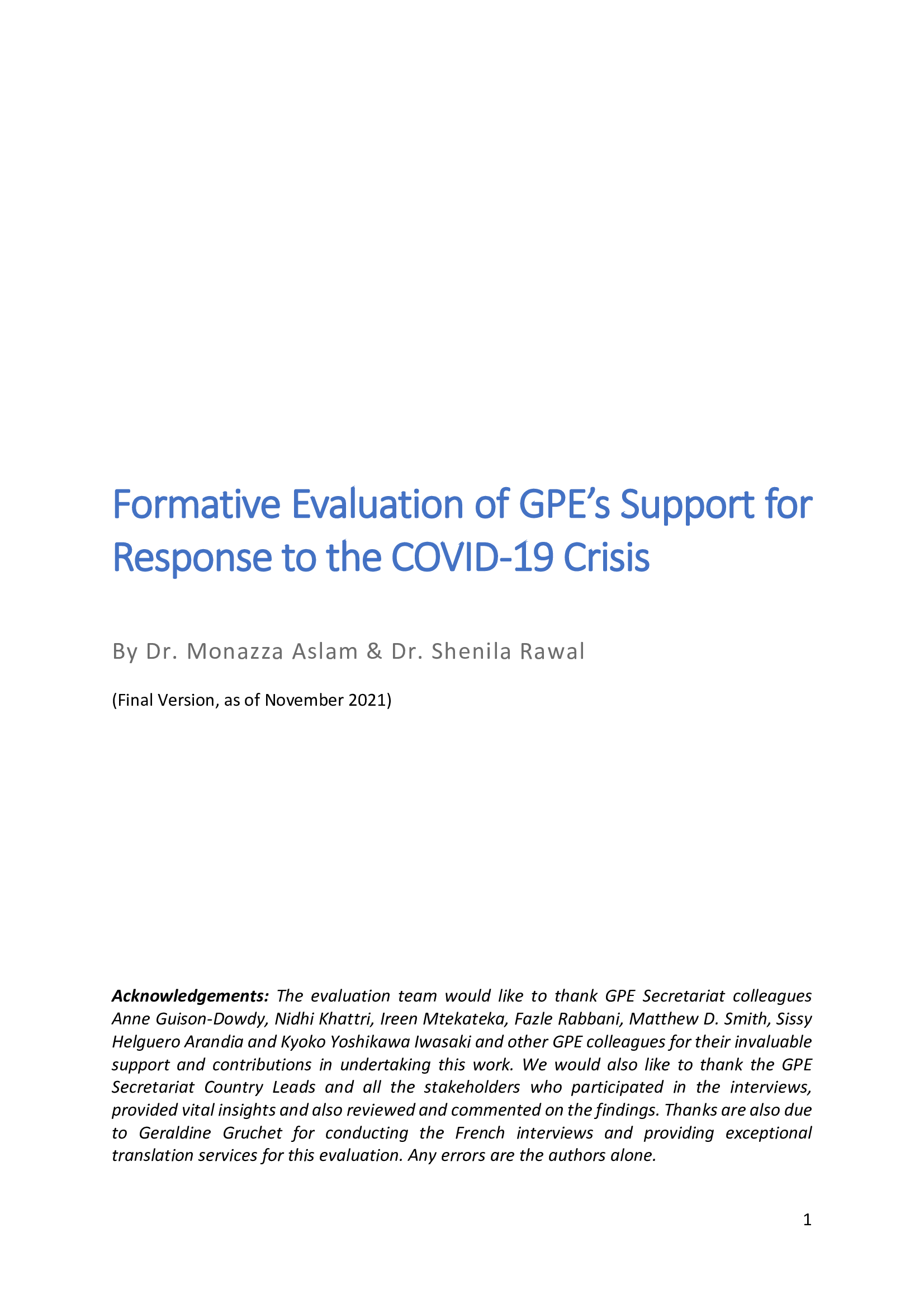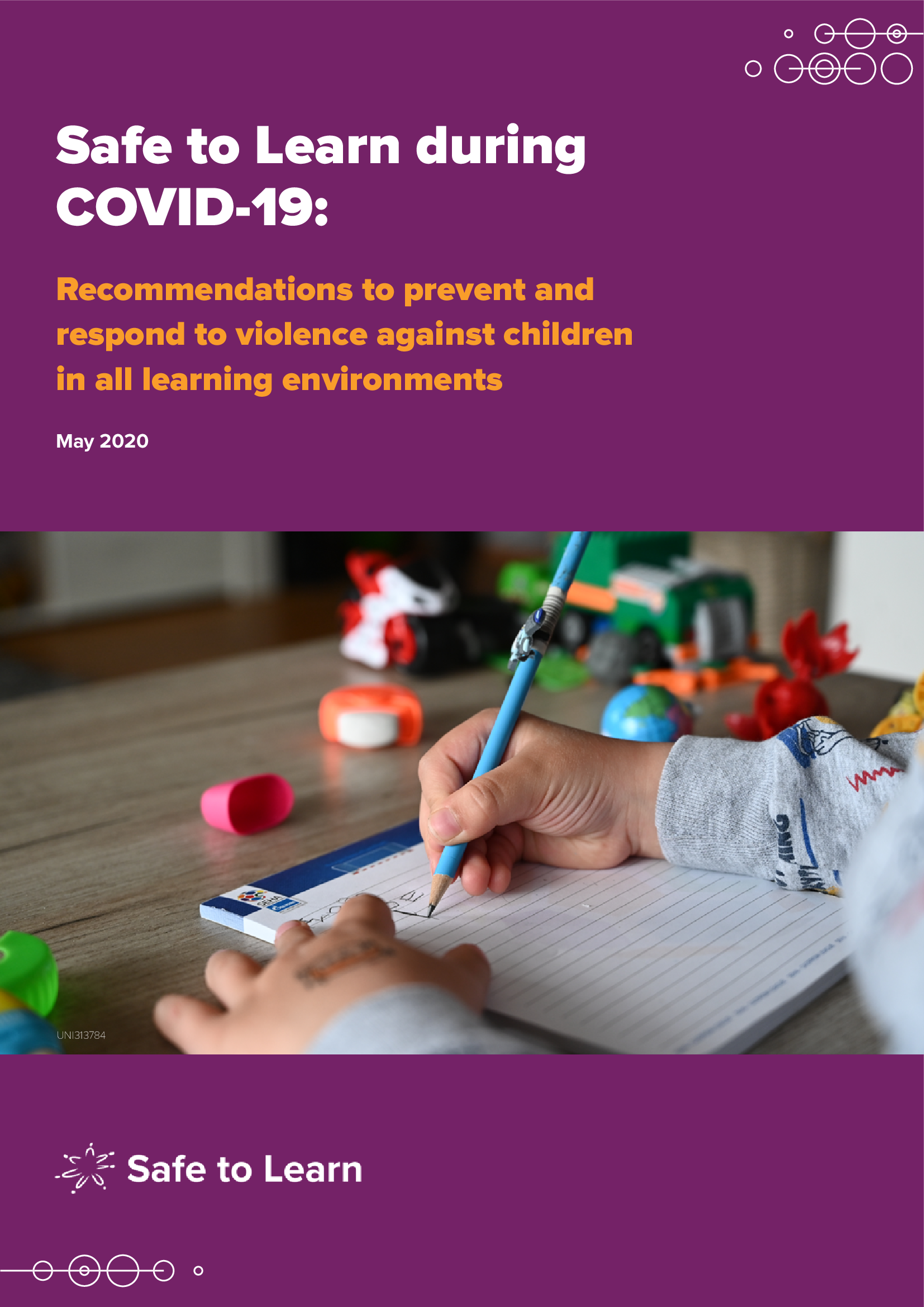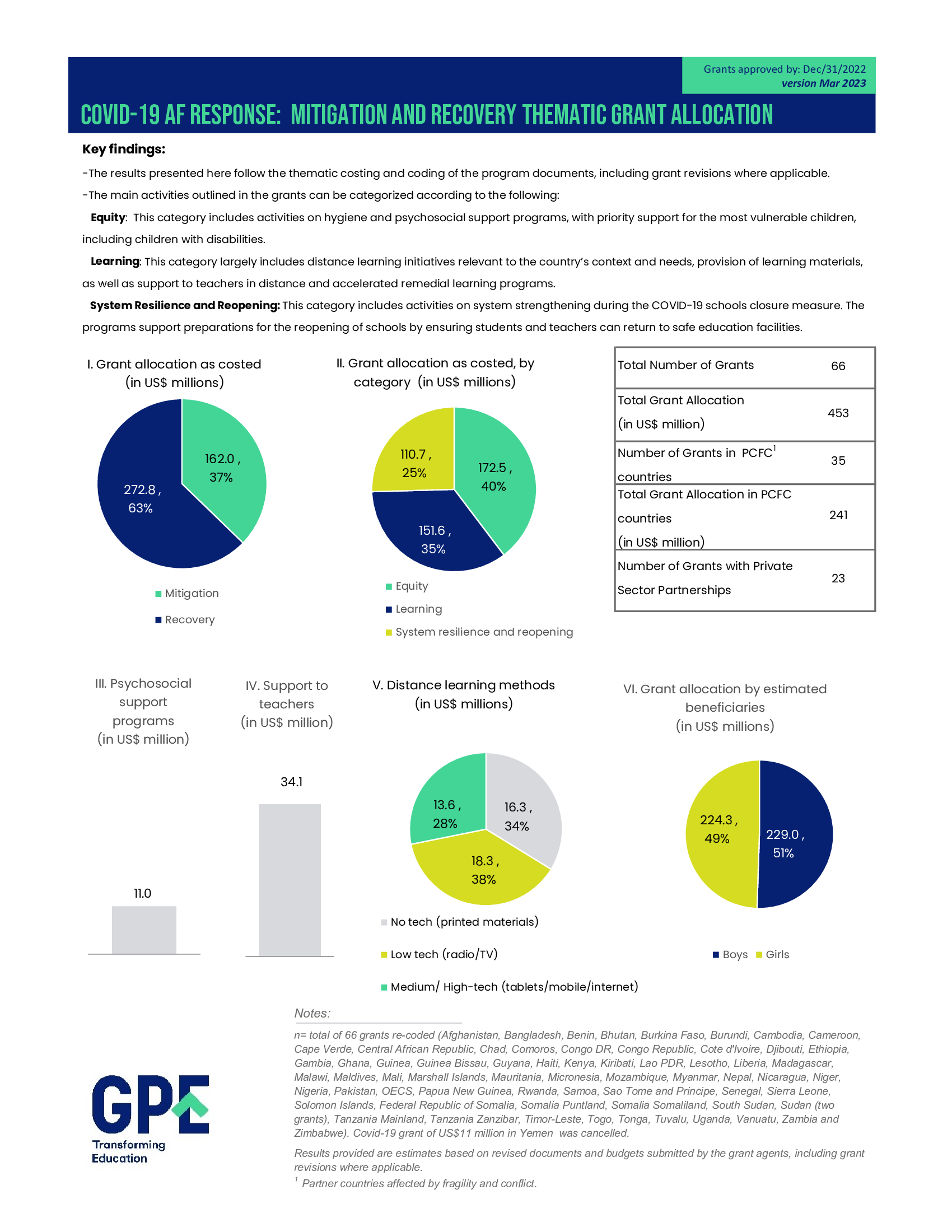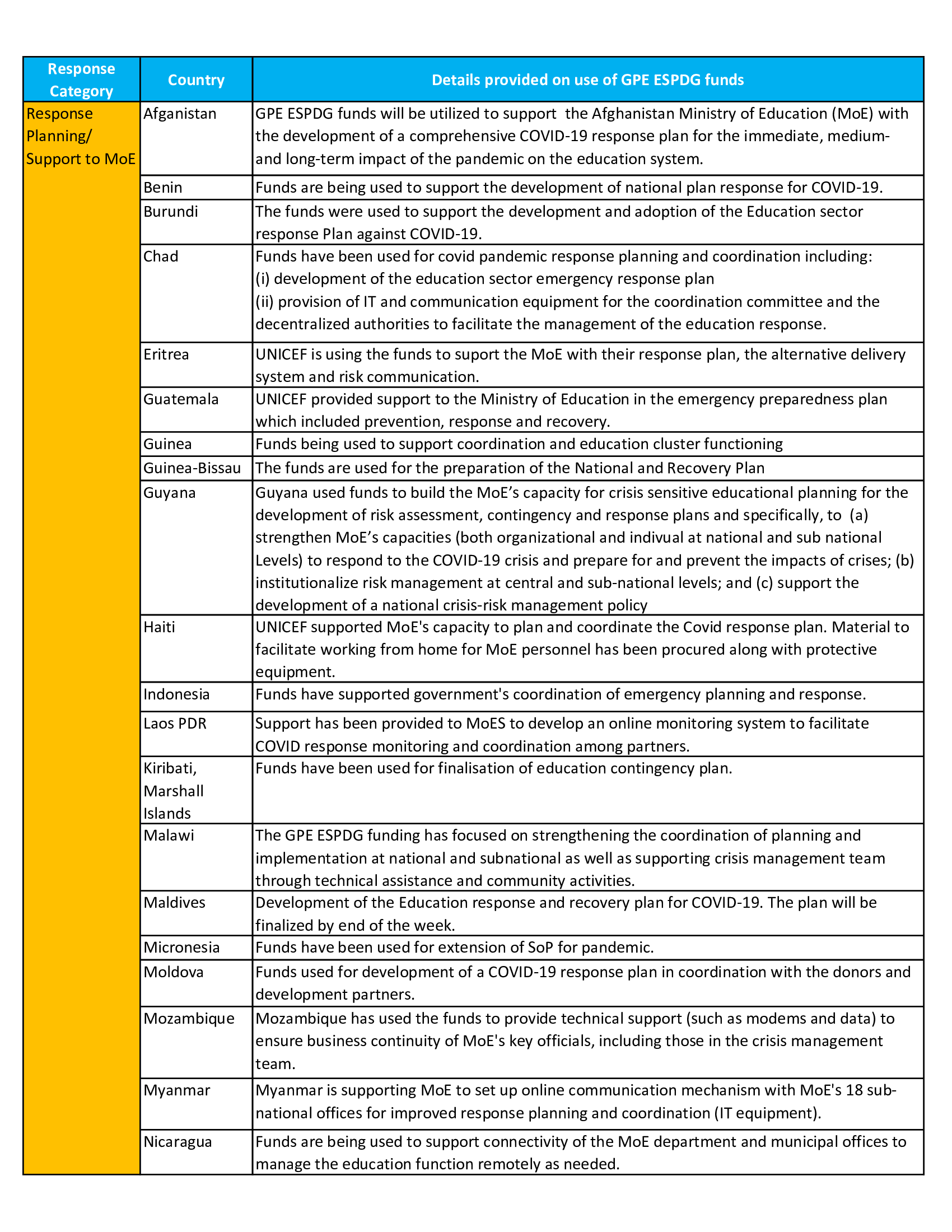GPE response
Between April and October 2020, GPE approved $467 million in COVID-19 accelerated grants to 66 countries and another $25 million for a global grant to UNESCO, UNICEF and the World Bank.
The grants to partner countries helped to produce and distribute learning materials, train teachers to track learning and provide distance education, ensure that schools could re-open safely, and provide remedial learning opportunities for children. The support also laid the foundations to build resilient education systems ready to face future crises.
Grant allocations by category
(in US$ millions)
Distance learning methods
(in US$ millions)
The country grants helped ensure that girls and children from the poorest families, who were hit hardest by school closures, were not left behind.
- Grants supported partner countries' response in:
- Equity: Hygiene and psychosocial support programs, with priority for the most vulnerable children, including children with disabilities.
- Learning: Distance learning initiatives, provision of learning materials, support to teachers in distance and accelerated remedial learning programs.
- System resilience and school reopening: Preparations for the reopening of schools by ensuring that students and teachers can return to safe education facilities.
- 38% of the grants support low tech solutions for distance learning (radio and TV); 34% support printed materials, and 28% support e-learning.
COVID-19 grants
- 66 countries received COVID-19 accelerated grants totalling US$467 million (see table below)
- 87 countries received a COVID-19 planning grant in March 2020 at the start of the pandemic for a total of US$8.8 million
- a US$25 million global grant funds a joint initiative by UNESCO, UNICEF and the World Bank to ensure regional and global efficiencies and knowledge sharing in the education pandemic response.
View data on COVID-19 and education
Approved grants
Click on each country in the table below to learn more about COVID-19 grants and related documentation
| Country | Amount (US$ M) | Grant agent |
|---|---|---|
| Afghanistan | 11 | UNICEF |
| Bangladesh | 15 | World Bank |
| Benin | 7 | World Bank |
| Bhutan | 0.75 | Save the Children |
| Burkina Faso | 7 | AFD |
| Burundi | 7 | UNICEF |
| Cabo Verde | 0.75 | UNICEF |
| Cambodia | 7 | UNICEF |
| Cameroon | 11 | UNESCO |
| Central African Republic | 7 | UNICEF |
| Chad | 7 | World Bank |
| Comoros | 0.75 | UNICEF |
| DR Congo | 15 | UNICEF |
| Republic of Congo | 7 | UNICEF |
| Cote d'Ivoire | 11 | UNICEF |
| Djibouti | 3.5 | World Bank |
| Ethiopia | 15 | World Bank |
| The Gambia | 3.5 | World Bank |
| Ghana | 15 | World Bank |
| Guinea | 7 | UNICEF |
| Guinea Bissau | 3.5 | UNICEF |
| Guyana | 3.5 | UNICEF |
| Haiti | 7 | UNICEF |
| Kenya | 11 | World Bank |
| Kiribati | 0.75 | UNICEF |
| Lao PDR | 7 | UNICEF |
| Lesotho | 3.47 | UNICEF |
| Liberia | 7 | UNICEF |
| Madagascar | 15 | World Bank |
| Malawi | 10 | UNICEF |
| Maldives | 0.75 | UNICEF |
| Mali | 7 | World Bank |
| Marshall Islands | 0.75 | UNICEF |
| Mauritania | 3.5 | IsDB |
| FS Micronesia | 0.75 | UNICEF |
| Mozambique | 15 | UNICEF |
| Myanmar | 11 | UNICEF |
| Nepal | 11 | World Bank |
| Nicaragua | 7 | World Bank |
| Niger | 11 | AFD/UNICEF |
| Nigeria | 15 | UNICEF |
| OECS (Dominica, Grenada, St. Lucia, St. Vincent and the Grenadines) | 3 | OECS |
| Pakistan | 20 | World Bank |
| Papua New Guinea | 9.44 | UNICEF |
| Rwanda | 10 | World Bank |
| Sao Tome and Principe | 0.75 | UNICEF |
| Samoa | 0.75 | UNICEF |
| Senegal | 7 | AFD |
| Sierra Leone | 7 | World Bank |
| Solomon Islands | 0.75 | UNICEF |
| Somalia (Federal Government) | 5.4 | Save the Children |
| Somalia (Puntland) | 1.3 | UNICEF |
| Somalia (Somaliland) | 2.2 | Save the Children |
| South Sudan | 7 | UNICEF |
| Sudan | 11 | World Bank |
| Tanzania | 15.16 | SIDA |
| Tanzania (Zanzibar) | 1.5 | UNICEF |
| Timor-Leste | 3.5 | UNICEF |
| Togo | 7 | World Bank |
| Tonga | 0.75 | Save the Children |
| Tuvalu | 0.75 | UNICEF |
| Uganda | 15 | World Bank |
| Vanuatu | 0.75 | Save the Children |
| Yemen | 11 | ISDB |
| Zambia | 10 | UNICEF |
| Zimbabwe | 7 | UNICEF |
| TOTAL | 467.22 |
Last updated: November 2, 2020










